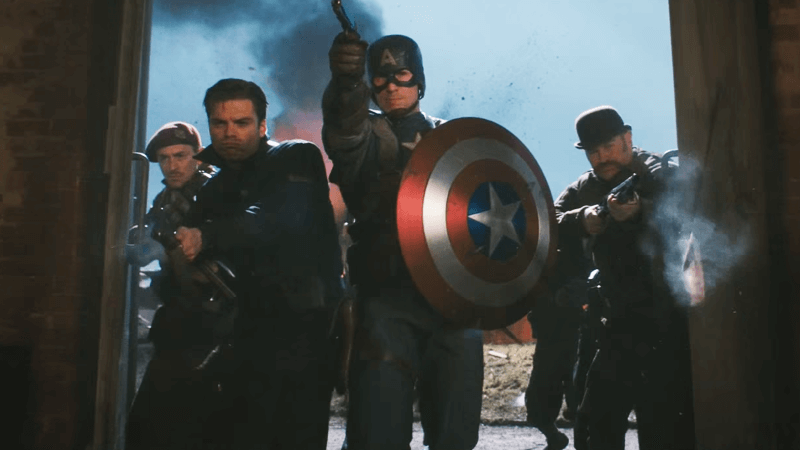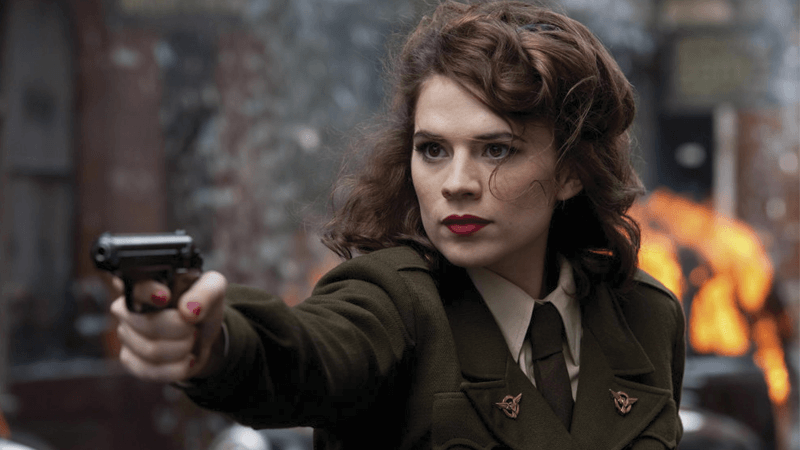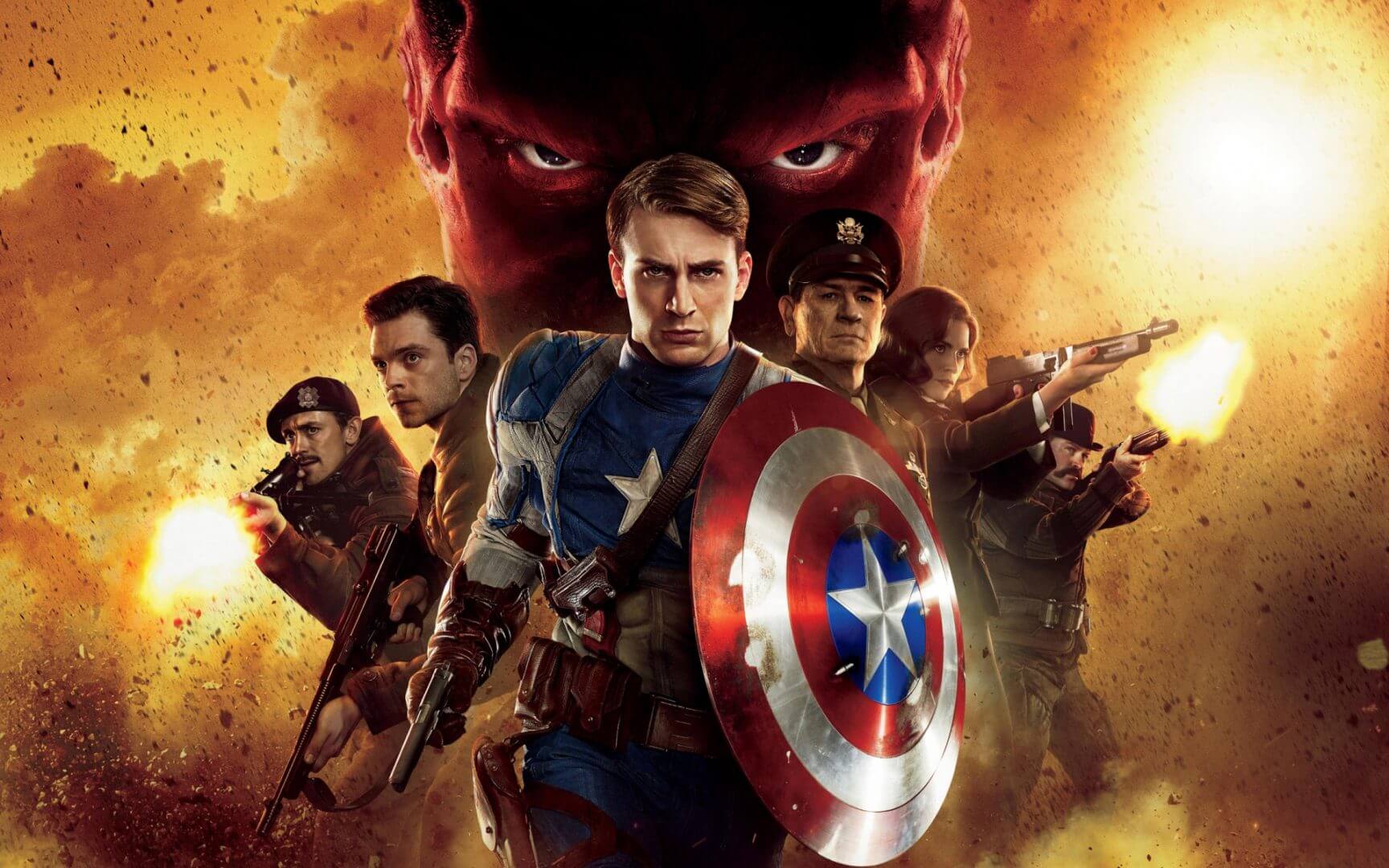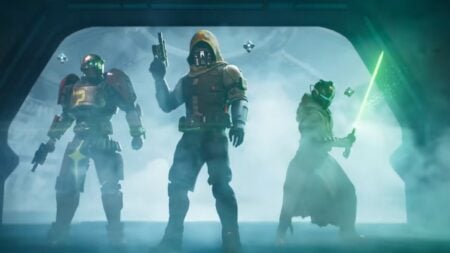When I first saw the lineup for “Phase One” of the MCU, Captain America: The First Avenger was the film I was most apprehensive about. Aside from really terrific comics written by Mark Waid and Ed Brubaker, it seemed difficult to successfully adapt his story. Once Joe Johnston was brought on to direct, my concerns seemed to evaporate when I saw the trailer. Much like his film The Rocketeer, Captain America: The First Avenger is a period piece set during World War II but with fantastical technology mixed in. It’s not a flawless film, but its combination of old-school blockbuster charm and pacing make for a very enjoyable experience.
Following a brief introduction in which Cap is discovered frozen in the Arctic, the film jumps back to 1942. We see Captain America as courageous but fragile Steve Rogers. Due to his poor health and physical conditioning, he is unable to enlist in the Army to fight the Nazis. After attending the World’s Fair in NYC with Sgt. Bucky Barnes (Sebastian Stan), Steve encounters Dr. Erskine (Stanley Tucci). He’s a German scientist collaborating with the Army in order to create an army of “Super Soldiers” to fight the war. Despite the protests of Col. Phillips (Tommy Lee Jones), Rogers is chosen as the initial guinea pig for the Super Soldier Serum. As a result, he becomes the titular hero in order to stop HYDRA leader Red Skull (Hugo Weaving) from achieving his goals of world domination.
One of the biggest challenges I saw in adapting Captain America to a film was sickly to superhero transformation. I mean this in more than the physical way; Steve had to remain the same courageous man he always was without taking his newfound abilities for granted. In this film, the transition is astonishing. The special effects department did not simply place Chris Evans’s head on a smaller actor. They digitally shrunk Evans’s own body to portray him as small Steve Rogers. More importantly, Captain America is constantly portrayed as a relatable person throughout the entire film. Evans does a fantastic job in not only portraying the earnest side of Rogers but also the soldier. Unlike say Superman or Batman, Rogers recognizes wars have casualties and he is not afraid to kill.

Out of all the superheroes introduced in Phase One, Captain America arguably is the most relatable in terms of his origin story and characterization. He doesn’t have the overwhelming physicality of Thor/Hulk or the extravagant wealth of Tony Stark. Ironically, we do see Howard Stark (Dominic Cooper) played a significant role in Captain America’s story as the “Q” to Captain America’s 007. It’s impressive how much Cooper evokes Robert Downey Jr. without doing a straightforward impression. As a collaborative whole, Captain America: The First Avenger has my favorite ensemble cast barring The Avengers. Given the straightforward story as well as the John Ford-like qualities, it’s surprising that none of the characters feel oversimplified or stereotypical. All of the actors are very much invested in the film, even those I expected to not be like Tommy Lee Jones. An argument could be made for Red Skull, but his presence and Weaving’s perfectly balanced performance makes up for his standard “film Nazi” motivations.
If you’re a fan of Captain America’s comic history, there’s plenty of homages and clever techniques used to pay tribute. From old costumes to recreating the iconic cover of Cap punching out Adolf Hitler, there’s excellent detail throughout. Johnston knows the films of that period and uses that to full effect. The period detail and level of craftsmanship throughout the film add to the old-school feel the film perpetuates. When it comes to the broad strokes, I think that’s where the flaws appear. While the movie does move at a quick pace, it’s at the expense of giving Captain America a true arc. His story is essentially serialized: we see him become Captain America, his experience as a tool to sell the war, his battles during the war, and his untimely fate of being frozen in ice. Between this and some awkward transitions between acts, I felt like the movie became a series of montages instead of a fully fleshed out narrative.
There’s plenty of great callbacks to the history of Captain America, but the film does a lackluster job of handling the character of Bucky Barnes. For a character who is so essential to Captain America’s history, there’s not a lot done with him throughout the film. As a result, the resolution doesn’t have the emotional impact that it should. What doesn’t work there is made up for with the dynamic between Captain America and Peggy Carter (Haley Atwell). What works so well is that she’s not a character who relies on her beauty. Johnston and the screenwriters take a long time to really show her as any sort of romantic lead. The film builds up the chemistry between Atwell and Evans to a surprisingly emotional conclusion. Speaking of, the climax is both action heavy and emotionally taxing. I find that both of these elements have rarely come together in the third acts of the MCU with a recent exception in Civil War.

After the first Iron Man, it appeared to me that perhaps the MCU had peaked too early. I wasn’t too sure about how The Avengers ultimately would turn out. Luckily, Captain America: The First Avenger rejuvenated my excitement for the culmination of Phase One. It doesn’t feel like a set-up for the future of the series aside from the brief epilogue. It’s one of the most watchable films Marvel has put out and one of the few worth seeing in 3D. For its faults in the narrative structure and some questionable character dynamics, the movie works as pure escapism. It’s a blockbuster in the best sense; a fun adventure that doesn’t insult the intelligence of the viewer.







